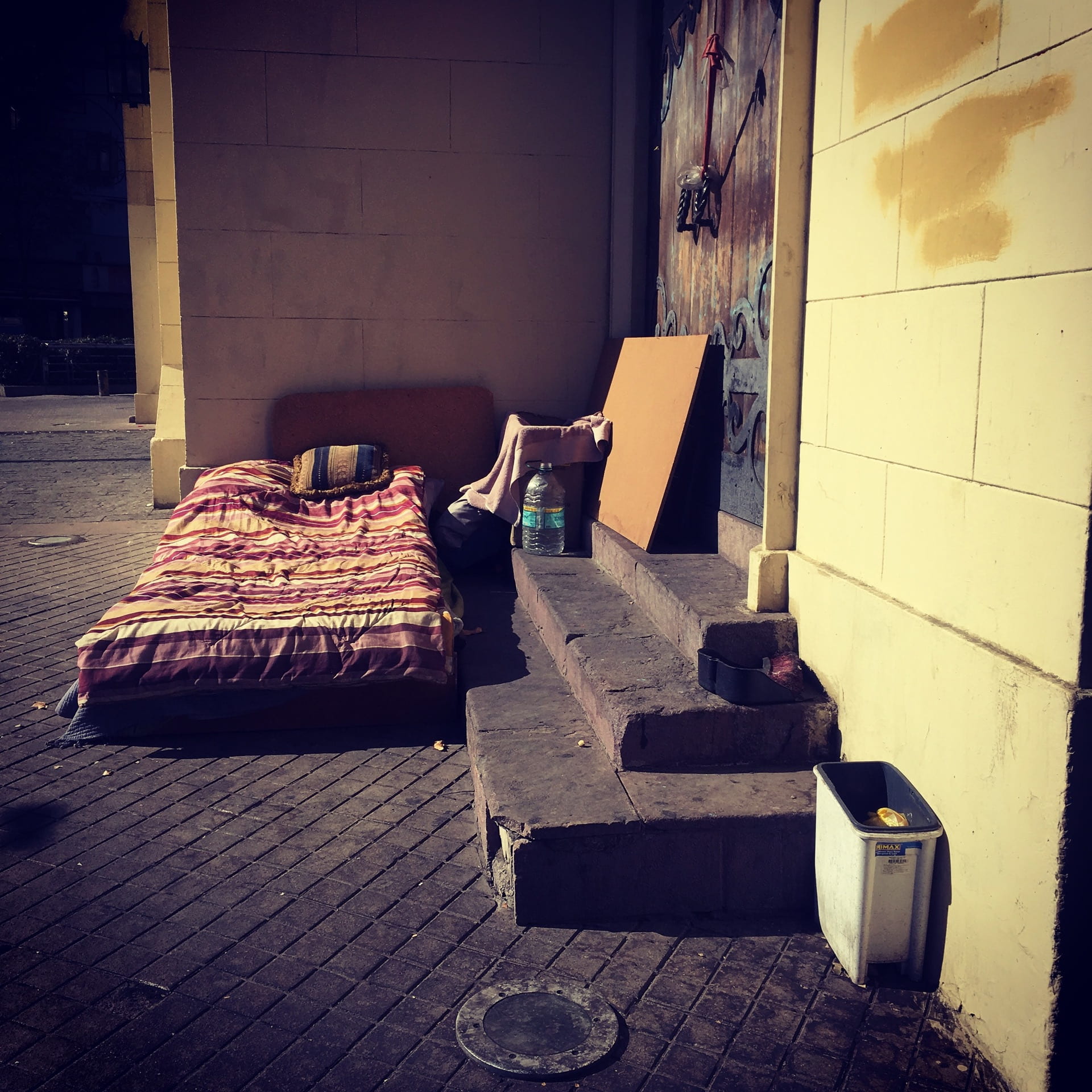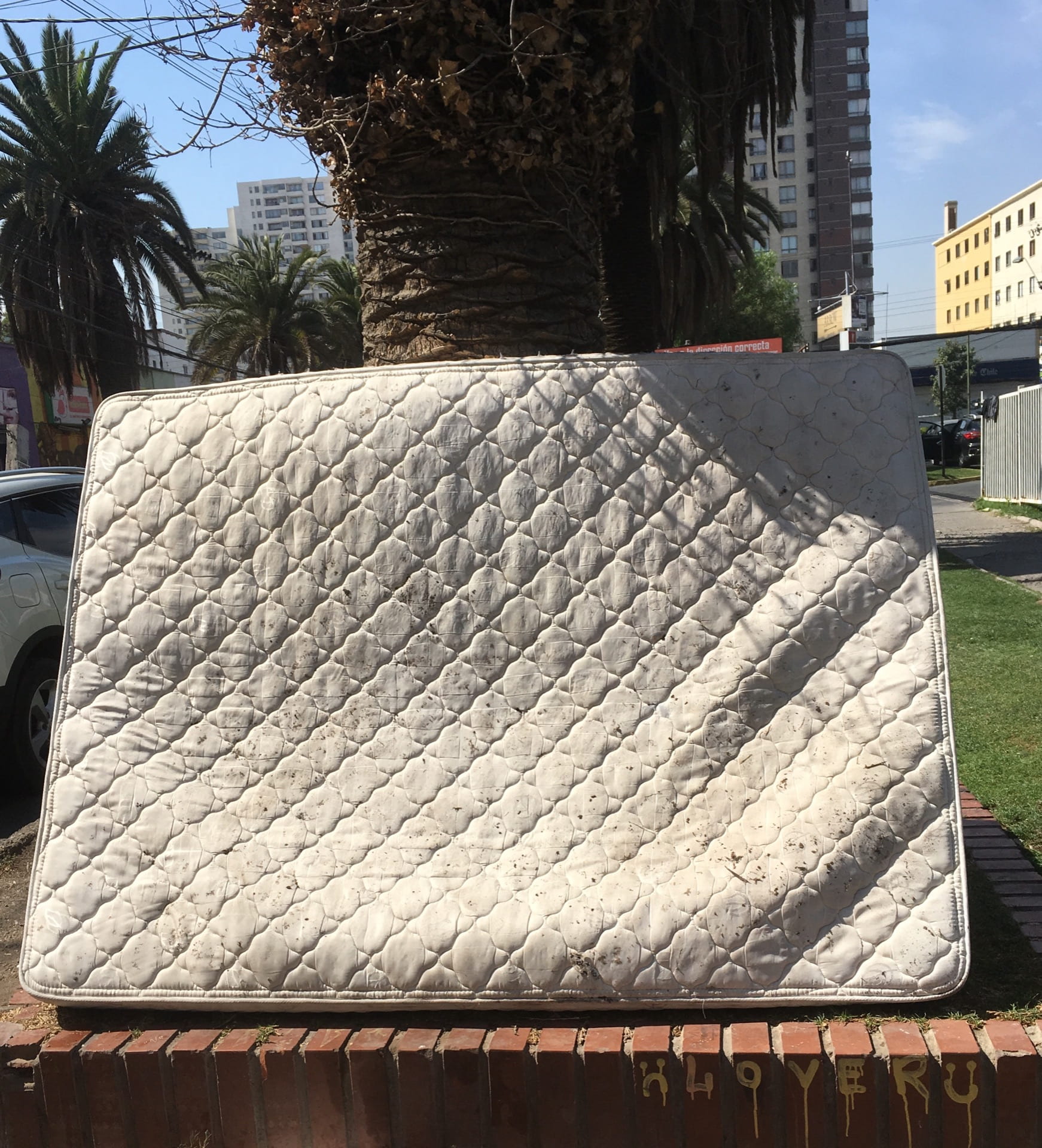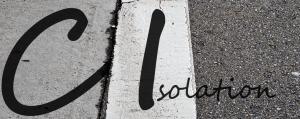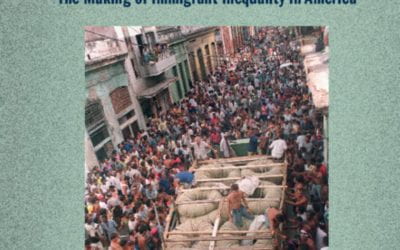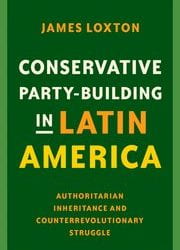Order and Disorder in the Contemporary City
The photos of Carlos Navarette were selected for the exhibit “Documenting the Impact of Covid-19 through Photography: Collective Isolation in Latin America,” curated in collaboration with ReVista and the Art, Culture, and Film program at Harvard’s David Rockefeller Center for Latin American Studies (DRCLAS.)
The exhibition, based on an Open Call for Photography launched in July 2020, aims to create a critical visual record of our unprecedented times so they can be remembered by future generations.
As a rule, cities are my favorite place to reflect on identity and territory. But, what is identity in a situation in which architecture, history and even the garden are valued more than the landscape? I don’t have the answer, but I can only affirm that the more cities I experience, the less certain I am that I can come to recognize myself in one of them.
For several years, I dedicated myself to traveling to distant places with the intimate desire to understand from experience the relationship between landscape and territory, the dual concepts of micro/macro and cosmos/chaos, something that the Italian artist Alighiero Boetti tirelessly investigated from the concept of twinning through work in which the art of embroidering was fundamental.
In my case, I’ve looked at this twinning through the perspective of gardens, both in the Western and Eastern concepts. In 2000-2001, I participated in the Research Program at the Center for Contemporary Art (CCA) Kitakyushu in Japan, which later led me in 2003 to the Schloß Solitude in Stuttgart, Germany, to compare my research in the East with the phenomenon of Western gardens as a reflection of time and geometry.
In the last few years, I’ve focused on thinking about in how different points of the city, cosmos and chaos acquire surprising layers, since in one part, development and growth are evident, while in other zones, only blatant deterioration and abandonment exist.
I have captured these contradictions in my Instagram account (@camparibianco) in which through the concept of minimalism, I try to reflect on objects and my encounter with them. Among many objects scattered throughtout the city, I have particularly noticed how the waste of foam sheets (EPS), the packing material for some household appliance or other, rapidly piles up in disuse. However, its sculptural form in some cases has provoked me to give it a use beyond its initial purpose. This intrigue has divided my work into two lines, one of the ephieral actions registered in my Instagram account and the other in installations in spaces dedicated to contemporary art. Visual articulations that in some way provide a concert for two-hand piano reflecting on the same themes: trips—time—geometry.
However, since last March when the global pandemic of Covid-19 meant obligatory confinement for virtually every human being on this planet, then the question I asked myself through my visual practice was: is there an object or form capable of reflecting our human condition in this health crisis. Rapidly, I discovered that the city was filling up with cardboard boxe and mattresses, which for some strange reason began to fulfil the role of the castaway objects that I was in the habit of finding for my photographic documentation.As the months went by, I grasped that a significant number of residents in the city of Santiago were renovating their homes and that among the elements discarded, mattresses were a perfect example to illustrate this state of confinement, to sleep or simply to rest was something important in their lives. But at the same time, many immigrants started to live on the streets because they no longer had a job that would allow them to pay rent even on a more modest home. These parallel destinies—those who could sleep in a secure home and those who were forced to live on the streets, I saw reflected in the varied mattresses that I was finding and photographing on the streets from March on.
Meanwhile, along with finding mattresses, I encountered hundred of cardboard boxes of different sizes, designs and with multiple inscriptions; they made me think of how people were living in this state of pandemic. I already discovered that people were beginning to shop for food and basic needs online, rather than going to stores, and the goods they needed were delivered to their homes quickly.
Once again, I saw social inequality reflected in these boxes, since for some it was simply a disposable container, but to the homeless, the boxes provide a space of privacy to this home of found mattresses and cardboard boxes jumbled together in the alley of a store or some corner of the street.
I registered each one of these daily and apparently insignficant situations in my Instagram account, taking as my concept the idea of publishing only one image in three versions, using the platform’s filters to obtain three different viewpoints of the same phenomenon. I aimed to achieve the idea of “object trouvé” and minimalist thought in their visual forms. The caption for each image always indicates the number of the image in Instagram and a quote from a contemporary artist or a memory prompt so that the reader can imagine what I have seen in this photographic documentation.
The last observation seems important for me to mention, because more than photographing an object or a piece of waste, for me it is to photograph a moment in time, and in presenting the moment in three slightly distinct versions, it is playing with this idea of filmmaker Andrei Tarkovsky about a film shot as a flow of time.
- Minimal&marginal 3746 / After Guillermo Kuitca. April 1, 2020. Santiago de Chile – San Miguel
- Minimal&marginal 3746 / After Guillermo Kuitca V. April 21, 2020. Santiago de Chile – San Miguel
- Minimal&marginal 3921 / After Yves Klein – Bleu le Monochrome. June 22, 2020. Santiago de Chile – El Bosque
Orden y desorden en la ciudad contemporánea
Por Carlos Navarette
Las fotos de Carlos Navarette fueron seleccionado para la exposición, “Documentando el impacto de Covid-19 a través de la fotografía: Aislamiento colectivo en Latinoamérica”, auspiciado por ReVista y el Art, Culture, and Film program del David Rockefeller Center for Latin American Studies (DRCLAS) de Harvard.
La exposición, resultado de el concurso de fotografía anunciado en Julio 2020, busca crear un registro visual de estos tiempos sin precedentes y contribuir a nuestra futura memoria histórica. 2020 será recordado como una año decisivo en el que una pandemia dejó al descubierto las desigualdades y fisuras dentro de nuestra sociedad y la relevancia de vivir y participar de la vida en comunidad incluso mientras se vive la pandemia de forma aislada. La muestra procura promover una perspectiva regional del aislamiento colectivo impuesto por el Covid-19 desde América Latina y el Caribe.
Las ciudades en general para mí son los escenarios predilectos en donde me es posible reflexionar en torno a la identidad y el territorio. Pero ¿qué es la identidad en una situación marcada por la arquitectura, la historia e incluso el jardín por sobre el paisaje? No lo sé, solo puedo afirmar que mientras más ciudades he visitado menos certeza tengo de que pueda llegar a reconocerme en alguna de ellas.
Durante varios años dediqué mis esfuerzos a recorrer parajes distantes con el íntimo deseo de comprender desde el lenguaje de las instalaciones las relaciones entre paisaje y territorio, desde los binomios micro/macro y cosmos/caos, algo que el artista italiano Alighiero Boetti investigó incansablemente desde la problemática de la combinatoria a través de una obra en donde el arte de los tapices le fue fundamental.
En mi caso ha sido el estudio de los jardines, tanto en su concepción occidental como oriental ya que entre los años 2000 y 2001 fui considerado en el Research Program del Centro de Arte Contemporáneo (CCA) Kitakyushu en Japón, lo que luego me llevó en el 2003 a la Schloß Solitude en Stuttgart, Alemania para confrontar mis investigaciones realizadas en oriente al fenómeno de los jardines occidentales como reflejo del tiempo y la geometría.
Durante los últimos años me he concentrado en reflexionar en como en diversos puntos de la ciudad el cosmos y caos adquieren ribetes inusitados, ya que por una parte se manifiestan como parte del desarrollo y crecimiento de la urbe; y por otra, como un franco deterioro u abandono de algunas zonas de la misma.
Esto lo he capturado en mi cuenta de Instagram (@camparibianco) en donde a través de la idea del minimalismo intento reflexionar en torno a los objetos y el encuentro con ellos. Entre los muchos objetos dispersos por la ciudad he reparado en los desechos de poliestireno expandido, los que siendo embalaje de algún utensilio doméstico, son rápidamente apilados para su desuso. Sin embargo, su forma escultórica en varios casos me ha interesado para darle un uso más allá de su inicial función. Asunto que ha dividido mi cuerpo de obra en dos frentes de trabajo, por una parte las acciones efímeras registradas en la cuenta de IG y las instalaciones en espacios dedicados al arte de nuestro tiempo. Articulaciones visuales que a la manera de un concierto de piano a dos manos, reflexionan sobre un mismo tema: viajes – tiempo – geometría.
Sin embargo, a partir de marzo pasado la pandemia global del Covid-19, significó un confinamiento obligatorio para cada uno de los habitantes de este planeta, entonces la pregunta que me formulé a través de mi práctica visual fue ¿existe un objeto o forma capaz de reflejar nuestra condición humana en esta crisis sanitaria? Rápidamente descubrí que la ciudad se llenaba de cajas de cartón y colchones, los que por una extraña razón comenzaron a ocupar el lugar de los objetos de desecho que habitualmente hallaba para mis registros fotográficos.
Con el paso de los meses, comprendí que un número no menor de habitantes en la ciudad de Santiago, estaban renovando sus hogares y entre los elementos que botaban el colchón era un ejemplo perfecto para explicar que en ese estado de confinamiento, dormir o simplemente descansar era algo importante en sus vidas. Pero de manera paralela, muchos inmigrantes comenzaron a vivir en las calles porque ya no tenían un empleo que les permitiese pagarse un arriendo de un hogar muchas veces modesto. Esta suerte de vidas paralelas entre los que pueden dormir en un hogar seguro y los que forzadamente deben vivir en la calles, lo vi reflejado en los diversos colchones que he venido encontrando y fotografiando en las calles de mi ciudad desde marzo en adelante.
Mientras tanto, a la par de ir encontrando colchones también hallé cientos de cajas de cartón de diversos tamaños, diseños y con múltiples inscripciones; ello me hizo meditar en cómo se estaba viviendo en este estado de pandemia. Ya que empecé a descubrir que las personas empezaron a realizar las compras de alimentos e insumos básicos, no de forma presencial sino que mediante internet con “apps” que en un corto lapso de tiempo llevaban a sus hogares lo que se necesitaba.
Nuevamente la desigualdad social la vi reflejada en esas cajas, ya que para los que tienen ingresos es simplemente un envase desechable, pero a las personas en situación de calle, este material les provee de un espacio de intimidad a ese hogar de colchones encontrados y cartones acumulados junto a un hall de una tienda o en un rincón de una calle.
Cada una de estas situaciones cotidianas y aparentemente insignificantes, las registro de manera diaria en la cuenta de IG, tomando como idea de trabajo publicar solo una imagen en tres versiones, utilizando los filtros de la plataforma para de esta manera obtener tres puntos de vistas distintos sobre un mismo fenómeno. El cual considero arraigado a la idea del “object trouvé” y del pensamiento minimalista en sus formas visuales. Ya que habitualmente el pie de foto para cada imagen indica el número de toma que aparece en la cuenta de IG y una cierta cita a un artista contemporáneo o ayuda memoria para que el lector se imagine que he visto en ese registro fotográfico.
Lo anterior me parece importante de mencionar, ya que más que un objeto o desecho a fotografiar, para mí es un momento y al presentar este momento en tres versiones, levemente distintas, habla de esa idea de cineasta Andrei Tarkovsky respecto al plano cinematográfico como un flujo del tiempo.
- Minimal&marginal 3921 / After Yves Klein – Bleu le Monochrome. June 22, 2020. Santiago de Chile – El Bosque
- Minimal&marginal 3746 / After Guillermo Kuitca V. April 21, 2020. Santiago de Chile – San Miguel
- Minimal&marginal 3746 / After Guillermo Kuitca. April 1, 2020. Santiago de Chile – San Miguel
Carlos Navarrete is a Chilean artist and photographer based in Santiago. In 2001 he was invited to participate at Corso Superiore in Arte Visiva at Fondazione Ratti leaded by Marina Abramovic. Since 2002 he has exhibited in many group and solo shows in Chile and abroad.
Carlos Navarrete es un fotográfo chileno.
Related Articles
A Review of Cuban Privilege: the Making of Immigrant Inequality in America by Susan Eckstein
If anyone had any doubts that Cubans were treated exceptionally well by the United States immigration and welfare authorities, relative to other immigrant groups and even relative to …
A Review of Conservative Party-Building in Latin America: Authoritarian Inheritance and Counterrevolutionary Struggle
James Loxton’s Conservative Party-Building in Latin America: Authoritarian Inheritance and Counterrevolutionary Struggle makes very important, original contributions to the study of…
Endnote – Eyes on COVID-19
Endnote A Continuing SagaIt’s not over yet. Covid (we’ll drop the -19 going forward) is still causing deaths and serious illness in Latin America and the Caribbean, as elsewhere. One out of every four Covid deaths in the world has taken place in Latin America,...

